 It’s that time again, a new version of OS X has been released! For those that aren’t aware of OS X, it’s Apple’s operating system. As usual, OS 10.4 is named after a cat: 10.2 was named Jaguar, 10.3 Panther, and the new 10.4 has been titled Tiger.
It’s that time again, a new version of OS X has been released! For those that aren’t aware of OS X, it’s Apple’s operating system. As usual, OS 10.4 is named after a cat: 10.2 was named Jaguar, 10.3 Panther, and the new 10.4 has been titled Tiger.
OS X has been touted by some as uncrashable, and that is how I’ve found it too: After setting it up, I haven’t once restarted my computer despite having installed over 30 applications since. This stability is what makes Apple have such a following of fans, and would be unheard of on a Windows box.
There’s lots of new goodies in Tiger, but in this article I’ll focus on the addition of a search technology called Spotlight, which makes searching through files instantaneous. It also allows the creation of so-called search folders, with links to every file which matches that folder’s search criteria, which I detail lower down.
The clever bit, is that these search folders are self-updating, meaning that as soon as you start writing a document containing the word “banana”, the search folder that is told to look for this word, will find it and create a shortcut to it along with all the other files that contain the word.
This is the spotlight icon in the menubar

Click it.
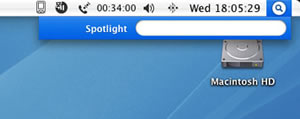
And type what it is that you are looking for. In my case, I typed ‘Summer’.
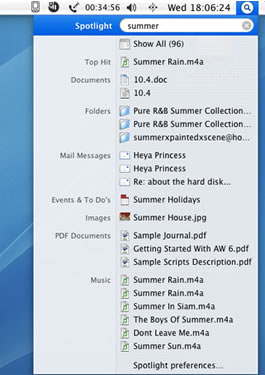
Within about one and a half seconds, the above menu appears. Clicking the top icon (Show All), shows a traditional window of all the results for the search. The second icon, labelled Top Hit, is the file that Mac OS X thinks is the most relevant to the search criteria.
The next section of search results lists folders with the word ‘Summer’ in their names. Pretty self-explanatory really.
Then email messages with the word ‘Summer’ in them are listed. The ability to index pretty much anything and then make it searchable is what’s so special about Spotlight.
The following one has items that Spotlight drew up from the calendar application I use.
Images, self-explanatory too.
PDF Documents are listed in the next section. Not many other search applications can index PDF files, but thanks to the tight integration of PDF with Mac OS X it is easily possible.
The last section contains music with the word ‘Summer’ in. Although not apparent here, Spotlight even searches the tags of MP3 and AAC files for words, meaning that if a song file was called, say, Winter but the artist in the tag of the file said ‘Summer’, it would still show up in the list of results.
Searchable folders, or “Smart” folders as Apple likes to call them, work similarly, but they are more use for things you often need to access and don’t want to keep typing into spotlight to find.
Click on the “file” option in the finder and then click on New Smart Folder.
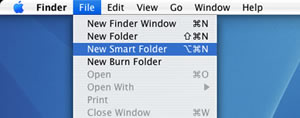
A window appears.
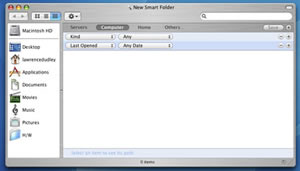
I typed “Summer” in the top right box as before. This instantly showed all the related files:
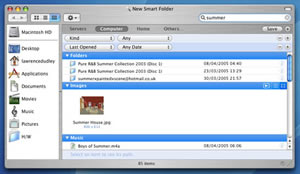
Next you just have to click on the red circle, the equivalent of the close window button in Windows. Finder asks you where you want to save the smart folder just created. I told it to just save it to the desktop as “Summer”:
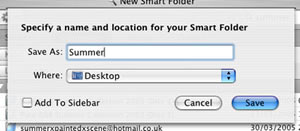
Hit Save and the newly created smart folder appears on the desktop:

Summary
Apple are carrying out a pincher movement. Bit by bit, Apple are both removing reasons for Windows users not to switch to Mac, while adding tempting reasons to convert. This latest offering of OS X, in conjunction with less viruses on a Mac, and access to a powerful collection of digital media software (iPhoto, iTunes, GarageBand, iMovie, iDVD) should encourage Windows users to want an Apple computer. Let’s not forget that the next significant version of Windows, Longhorn, and its promised security and anti-virus features, are still likely to be more than a year away,
Overall, there are many more new features in Tiger, over 200 according to Apple. Having made the change from Windows myself, my suggestion is to spend some time with a Mac and experience it for yourself. You too might make the change.
For those wanting to buy a brand new Apple Mac, they can be purchased from Amazon (US|UK), and if you are a student or are otherwise involved in education, you can get a juicy education discount from Apple, so there’s really no excuse anymore!
 Sony have produced a portable games console which on its own merit is going to sell a lot of units. However it has the possibility of becoming a portable media hub that will give even Microsoft a jolt by driving into their Portable Media Center market.
Sony have produced a portable games console which on its own merit is going to sell a lot of units. However it has the possibility of becoming a portable media hub that will give even Microsoft a jolt by driving into their Portable Media Center market. The system uses Sony’s 1.8″ UMD optical disk which comes in a protective sheath (like a minidisc). They’re small enough so you could easily carry a few around with you (though don’t eject them unless there’s something solid and accessible beneath you as they have a tendency to fly out and disappear somewhere awkward). There’s also a Memory Stick due (32MB supplied) to allow game saves and other features.
The system uses Sony’s 1.8″ UMD optical disk which comes in a protective sheath (like a minidisc). They’re small enough so you could easily carry a few around with you (though don’t eject them unless there’s something solid and accessible beneath you as they have a tendency to fly out and disappear somewhere awkward). There’s also a Memory Stick due (32MB supplied) to allow game saves and other features. The system looks like a USB memory device when attached to a PC (which basically gives access to the Memory Stick) and you can store audio and video on it. Sensibly, Sony support MP3 directly on the PSP, though it will also support ATRACplus encoded music. Interestingly, if someone decides to produce UMD music disks, they only support ATRACplus and linear PCM). Video is H.264/MPEG-4 AVC on the UMD and MPEG-4 SP, AAC on the memory stick.
The system looks like a USB memory device when attached to a PC (which basically gives access to the Memory Stick) and you can store audio and video on it. Sensibly, Sony support MP3 directly on the PSP, though it will also support ATRACplus encoded music. Interestingly, if someone decides to produce UMD music disks, they only support ATRACplus and linear PCM). Video is H.264/MPEG-4 AVC on the UMD and MPEG-4 SP, AAC on the memory stick. Once the PSP has real Internet capability it will be a media powerhouse, the screen size is about right for watching movies on the go. You could do this now by converting a current MPEG-2 (DVD) to MPEG-4 and storing it on the memory stick (ignoring all legal ramifications), but in future it’s more than likely you’ll be able to stream movies (or audio) directly to the unit. Sony as a music publisher and movie house, is likely to want to sell its content to a market of portable viewers – it owns both ends of the stick.
Once the PSP has real Internet capability it will be a media powerhouse, the screen size is about right for watching movies on the go. You could do this now by converting a current MPEG-2 (DVD) to MPEG-4 and storing it on the memory stick (ignoring all legal ramifications), but in future it’s more than likely you’ll be able to stream movies (or audio) directly to the unit. Sony as a music publisher and movie house, is likely to want to sell its content to a market of portable viewers – it owns both ends of the stick.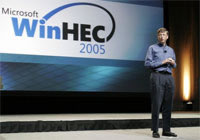 After several years of delays, Microsoft has assured computer-makers that Longhorn, the next version of Windows, is on track for release by the end of next year.
After several years of delays, Microsoft has assured computer-makers that Longhorn, the next version of Windows, is on track for release by the end of next year. This would offer a built-in method to let users view and print graphical documents, without the need to install the application that created the original file – in other words, a rival to Adobe Systems’ popular PDF technology and PostScript page description language.
This would offer a built-in method to let users view and print graphical documents, without the need to install the application that created the original file – in other words, a rival to Adobe Systems’ popular PDF technology and PostScript page description language.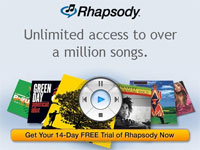 Real Networks is looking to up-end Apple’s iTunes store and nobble Napster To Go by launching a new music subscription services for portables music players.
Real Networks is looking to up-end Apple’s iTunes store and nobble Napster To Go by launching a new music subscription services for portables music players. Rhapsody 25 is the entry-level standard service which is completely free to use. It’s being supported by advertising, initially Chrysler and is designed to tempt people to subscribe. It allows anyone who downloads Rhapsody’s Windows-based jukebox software to listen to 25 songs for free each month from Rhapsody’s library, with the option to purchase and download songs a la carte. There will also be 25 ad-free radio stations available.
Rhapsody 25 is the entry-level standard service which is completely free to use. It’s being supported by advertising, initially Chrysler and is designed to tempt people to subscribe. It allows anyone who downloads Rhapsody’s Windows-based jukebox software to listen to 25 songs for free each month from Rhapsody’s library, with the option to purchase and download songs a la carte. There will also be 25 ad-free radio stations available. It’s been likened to having your CD collection on permanent hire purchase – once you lapse on your payments, you can kiss goodbye to your tunes. To old-school music fans, not owning your precious sounds is a bonkers proposition, but both Real and Napster believe there’s a market for subscription-based music downloads, with punters excited by the promise of filling an entire iPod for less than the price of two CDs.
It’s been likened to having your CD collection on permanent hire purchase – once you lapse on your payments, you can kiss goodbye to your tunes. To old-school music fans, not owning your precious sounds is a bonkers proposition, but both Real and Napster believe there’s a market for subscription-based music downloads, with punters excited by the promise of filling an entire iPod for less than the price of two CDs.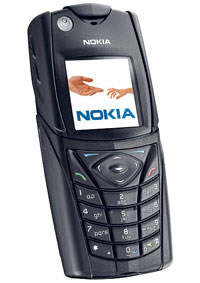 Sweatband-toting sporty types will be pleased to learn that Nokia has introduced a new handset for active-minded consumers, the Nokia 5140i camera phone.
Sweatband-toting sporty types will be pleased to learn that Nokia has introduced a new handset for active-minded consumers, the Nokia 5140i camera phone.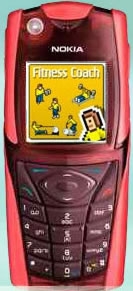 Water-bottle clutching joggers will appreciate the ‘Fitness Coach’ application, offering an ‘always-on’ personal trainer that (apparently) “encourages users to go the extra mile or finish the last set.”
Water-bottle clutching joggers will appreciate the ‘Fitness Coach’ application, offering an ‘always-on’ personal trainer that (apparently) “encourages users to go the extra mile or finish the last set.”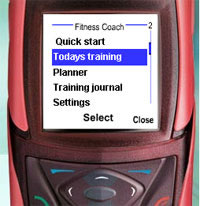 The phone also includes the
The phone also includes the 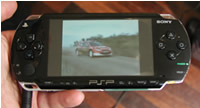 Big sighs of disappointment are heard all around Europe, as Sony officially announce the released date of the handheld gaming/media dream machine, the Sony PSP. It’s going to be 1 September 2005.
Big sighs of disappointment are heard all around Europe, as Sony officially announce the released date of the handheld gaming/media dream machine, the Sony PSP. It’s going to be 1 September 2005. Sony have announced the PlayStation Portable Value Pack at €249 (£179/US$323), which includes headphones, a 32Mb Memory Stick Duo, power supply, protective pouch, etc. The hit film Spider-Man 2 will be available on a UMD disc, free to early purchasers of PSP when they register on YourPSP.com.
Sony have announced the PlayStation Portable Value Pack at €249 (£179/US$323), which includes headphones, a 32Mb Memory Stick Duo, power supply, protective pouch, etc. The hit film Spider-Man 2 will be available on a UMD disc, free to early purchasers of PSP when they register on YourPSP.com. There are many tales of PSP-owners modifying their pride and joy to browser the Internet via Wi-Fi, or indeed run Instant Messaging client software.
There are many tales of PSP-owners modifying their pride and joy to browser the Internet via Wi-Fi, or indeed run Instant Messaging client software.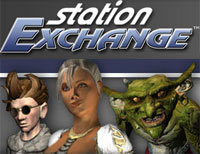 In an astonishing volte-face, Sony Online Entertainment (SOE) has announced that it now endorses the auctioning of virtual items from its massively popular online game, Everquest II – with the electronics giant pocketing a cut of the cash, naturally.
In an astonishing volte-face, Sony Online Entertainment (SOE) has announced that it now endorses the auctioning of virtual items from its massively popular online game, Everquest II – with the electronics giant pocketing a cut of the cash, naturally. Personally, we’d rather buy a round of lovely real ale than shell out for the Dark Lord of Deltronia’s Mystical Turbo Sword of Mwegneli, but as we’ve reported before (
Personally, we’d rather buy a round of lovely real ale than shell out for the Dark Lord of Deltronia’s Mystical Turbo Sword of Mwegneli, but as we’ve reported before (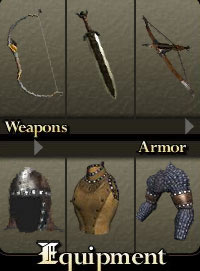 “There already is a ‘virtual class system’ within the game itself – you earn status and faction standing, money, prestige, titles, fancy clothes and transport, you start living in a hovel but can move on up to luxury apartments etc – But at least till now you could assume that most people had ‘earned’ those things by playing the game.
“There already is a ‘virtual class system’ within the game itself – you earn status and faction standing, money, prestige, titles, fancy clothes and transport, you start living in a hovel but can move on up to luxury apartments etc – But at least till now you could assume that most people had ‘earned’ those things by playing the game. “I’m not sure of the mechanics in EQII, but in WoW (World of Warcraft) they have mitigated the potential for selling items somewhat by introducing the concept of having things bind to that character when it is picked up, meaning you can’t transfer items to other players, hence no selling though eBay and the like.”
“I’m not sure of the mechanics in EQII, but in WoW (World of Warcraft) they have mitigated the potential for selling items somewhat by introducing the concept of having things bind to that character when it is picked up, meaning you can’t transfer items to other players, hence no selling though eBay and the like.” For some gamers, an officially sanctioned auction site is an inevitable consequence of the growing popularity of virtual gaming, with Sony’s cut, a reasonable price to pay for eliminating a lot of scams.
For some gamers, an officially sanctioned auction site is an inevitable consequence of the growing popularity of virtual gaming, with Sony’s cut, a reasonable price to pay for eliminating a lot of scams. Motorola handset owners will now be able to go multiplayer bonkers, courtesy of a new selection of real-time, multiplayer games from Motorola’s consumer portal, www.hellomoto.com.
Motorola handset owners will now be able to go multiplayer bonkers, courtesy of a new selection of real-time, multiplayer games from Motorola’s consumer portal, www.hellomoto.com. As well as playing directly against other phone users, game-hungry portal visitors will also be able to compete in ladder tournaments, view global rankings and chat in-game.
As well as playing directly against other phone users, game-hungry portal visitors will also be able to compete in ladder tournaments, view global rankings and chat in-game. “This represents another major step forward in the development of Terraplay given the stature of Motorola in the global wireless market. Motorola’s initiative is excellent news for the growth of the multiplayer sector,” purred Jeremy Lewis, Chairman of the Advisory Board, Terraplay Systems, “Multiplayer gaming, offered as premium services, is a real revenue generator and an ideal path to higher ARPU for all service providers”.
“This represents another major step forward in the development of Terraplay given the stature of Motorola in the global wireless market. Motorola’s initiative is excellent news for the growth of the multiplayer sector,” purred Jeremy Lewis, Chairman of the Advisory Board, Terraplay Systems, “Multiplayer gaming, offered as premium services, is a real revenue generator and an ideal path to higher ARPU for all service providers”.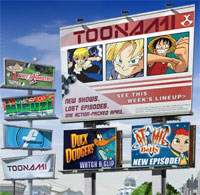 Video Networks Limited (VNL), who operate the HomeChoice VOD service around London, have added the children’s animation channel Toonami to their line up using the MPEG-4 / AVC format, making it the world’s first television channel to be encoded with advanced compression technology.
Video Networks Limited (VNL), who operate the HomeChoice VOD service around London, have added the children’s animation channel Toonami to their line up using the MPEG-4 / AVC format, making it the world’s first television channel to be encoded with advanced compression technology. VNL’s migration to MPEG-4 for its remaining broadcast channels, including the Cartoon Network and Boomerang, is expected to be completed within the next two months. In time the VOD service will also be moved to the new CoDec.
VNL’s migration to MPEG-4 for its remaining broadcast channels, including the Cartoon Network and Boomerang, is expected to be completed within the next two months. In time the VOD service will also be moved to the new CoDec. “The first commercially available encoding platform to support MPEG-2, MPEG-4/AVC and SMPTE VC-1, Harmonic’s DiviCom MV 100 enabled VNL to provision a compelling video-over-DSL service while in parallel developing the elements of an MPEG-4 environment.
“The first commercially available encoding platform to support MPEG-2, MPEG-4/AVC and SMPTE VC-1, Harmonic’s DiviCom MV 100 enabled VNL to provision a compelling video-over-DSL service while in parallel developing the elements of an MPEG-4 environment.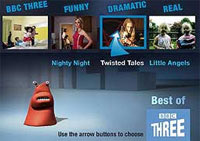 BBC Three viewers will be able to schedule their own Sunday night viewing in a pioneering multi-screen application trial starting on 1 May 2005.
BBC Three viewers will be able to schedule their own Sunday night viewing in a pioneering multi-screen application trial starting on 1 May 2005. Emma Somerville, the BBC’s Head of Interactive Programming, added: “Interactive TV can really help our audiences engage with the BBC’s TV channels.”
Emma Somerville, the BBC’s Head of Interactive Programming, added: “Interactive TV can really help our audiences engage with the BBC’s TV channels.”